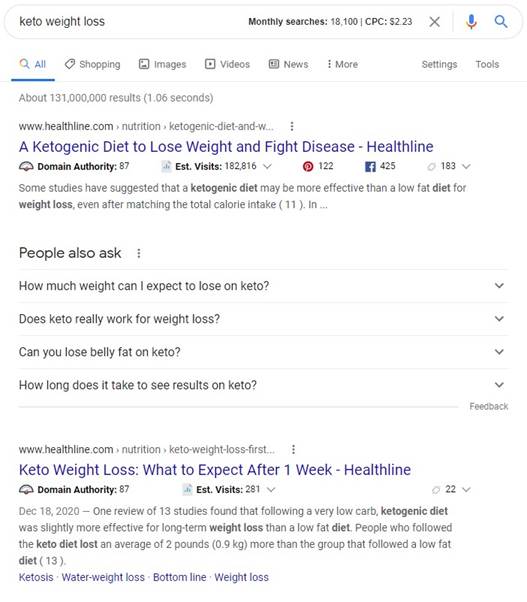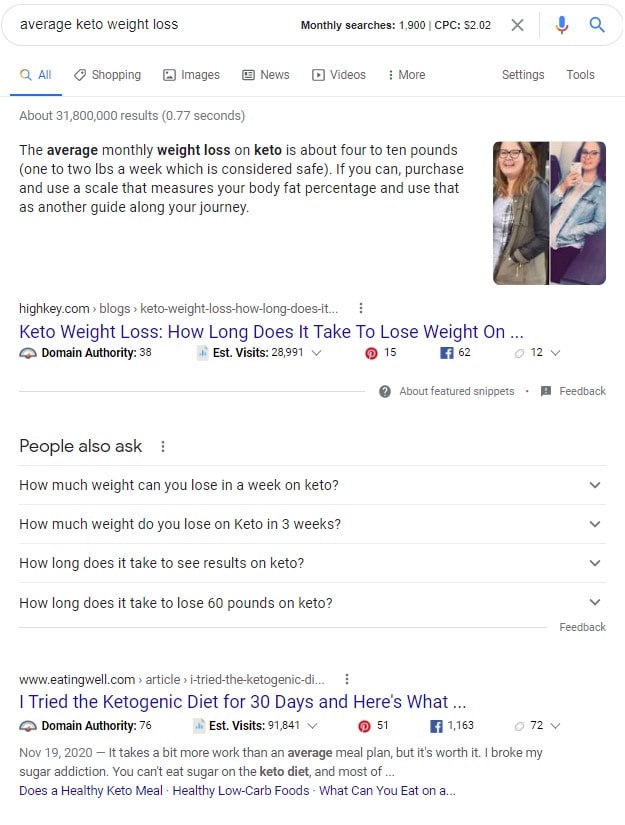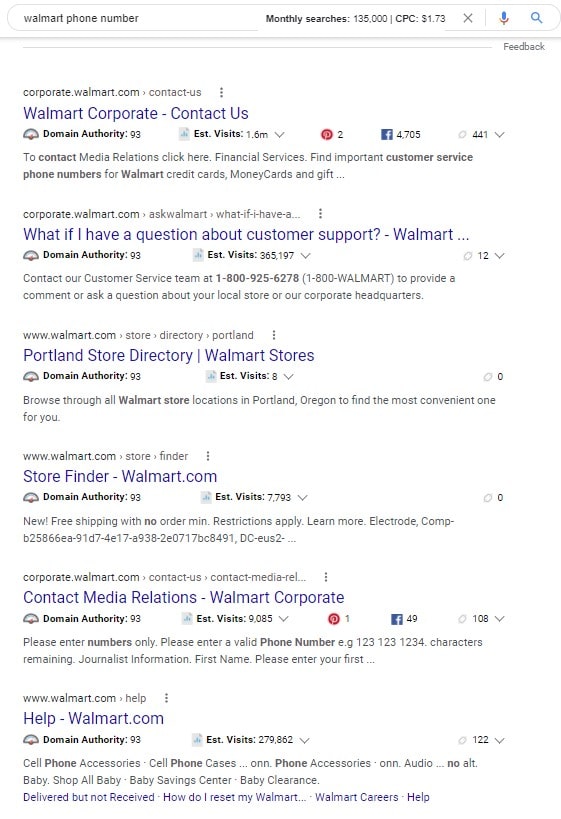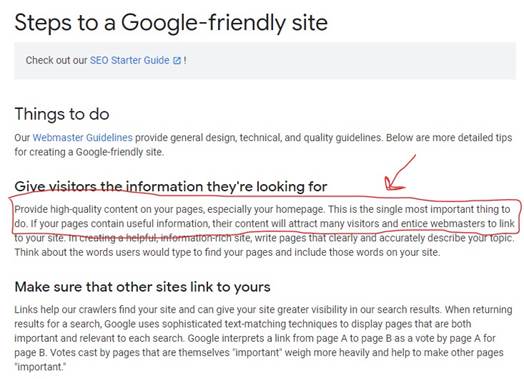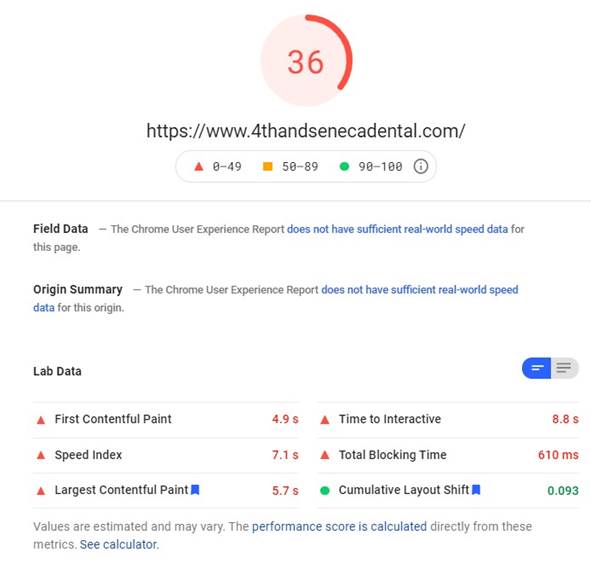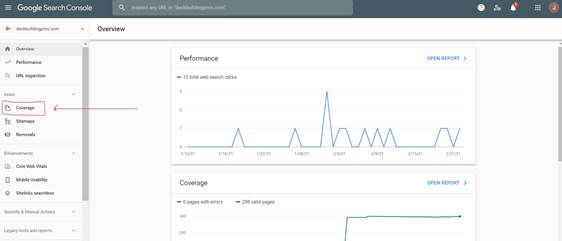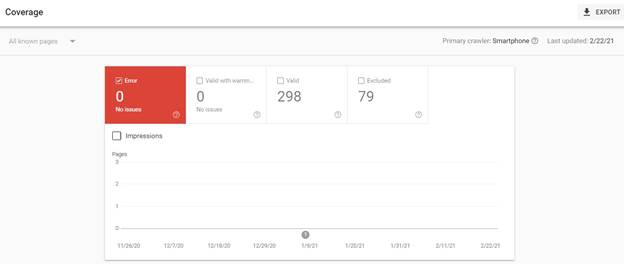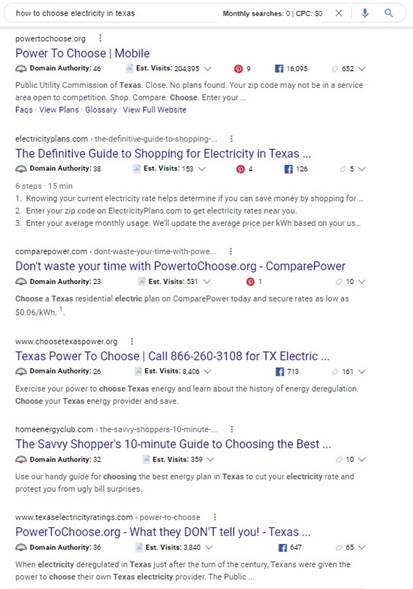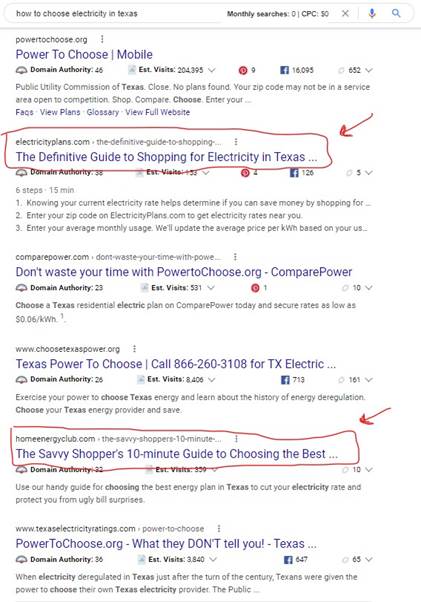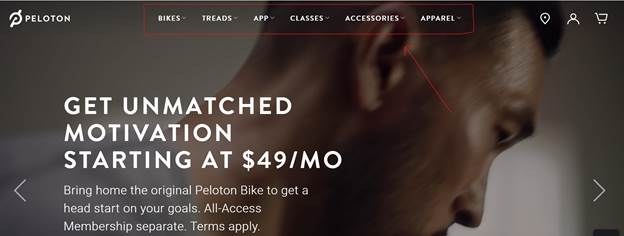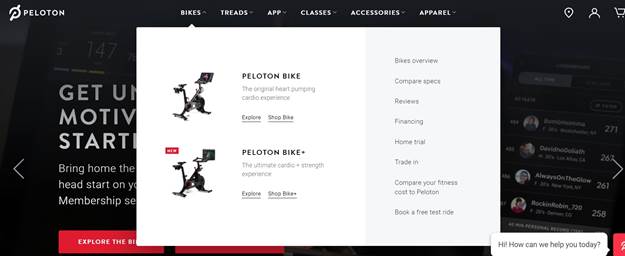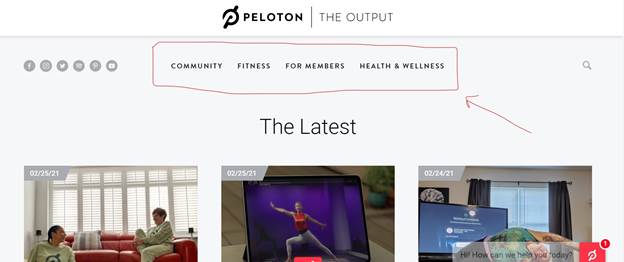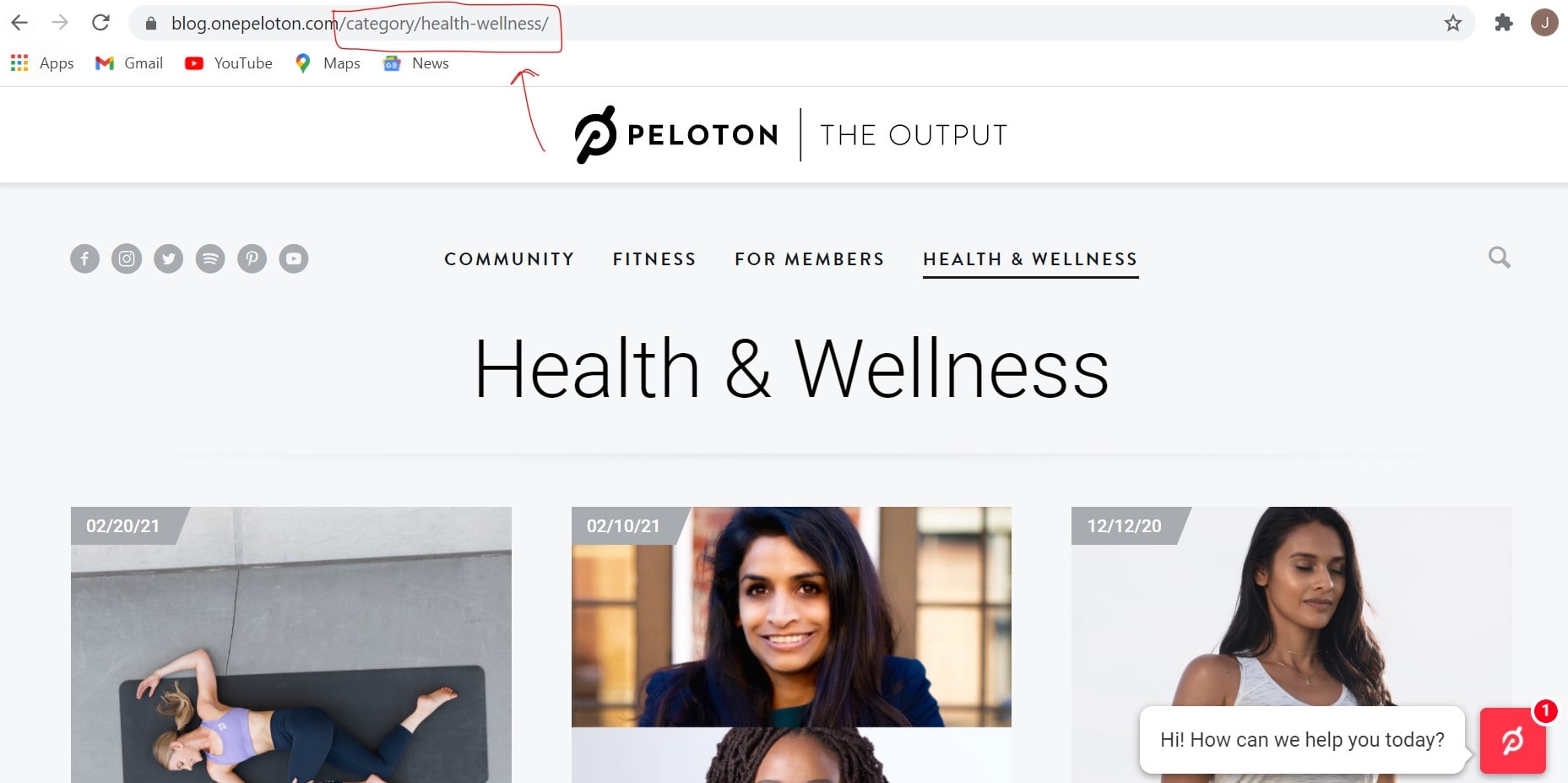There are hundreds of “SEO optimization best practices.”
But which ones are actually important for your website? The ones that will move the needle.
In this guide, we share 14 valuable SEO best practices that will improve SEO performance for your website.
Think of this guide as a tactical handbook, one that you can pull out and reference frequently.
Do SEO Practices Change Over Time?
SEO best practices change frequently. What was considered best practices 15 years ago likely is not today.
Back in 2005, websites used keywords much differently than they’re used today. Back then, you’d likely do the following:
- Create a page for every keyword variation that exists. If you were a staffing agency, you’d have a blog post for “how to get a job” and another for “how to find a job.” The content would be nearly identical. Nowadays, you shouldn’t do that.
- Add a keyword to a page 100 times. 15 years ago, Google’s algorithm wasn’t as sophisticated as it is now. Put simply, Google’s algorithm would look at the number of times you used a particular keyword. The more you used it, the better results you got.
Use SEO Best Practices or Techniques With The Next 5-10 Years in Mind
Ask yourself this basic question: If you were to implement SEO best practices from 10 years ago, would you rank today?
The answer is “probably not.”
Ask yourself another question: If you use today’s SEO best practices, will your website still perform well in 10 years from now?
The answer is, “I don’t know.”
Why are we talking about SEO best practices from 10 years ago and in 10 years from now?
SEO is a long-term game. Most businesses still want a healthy website in 10 years. They’ll want the SEO practices they’re using today to still benefit them in 10 years.
Try to go beyond the SEO best practices of today. We ask ourselves, “based on Google’s history, will this SEO strategy still be relevant in 10 years?”
Many other SEO “experts” use grey or black-hat strategies that may get short-term results but will only hurt a website long-term.
With that in mind, we share 19 SEO optimization best practices that we believe will provide long-term success for your website.
SEO Optimization Best Practices For Content
#1: Write Content That is More Comprehensive Than Your Competitors’
The word comprehensive is used dozens of times by Google.
In Google’s SEO Starter Guide it says “Content should be factually accurate, clearly written, and comprehensive.”
Google has thousands, if not tens of thousands, of “Quality Raters” around the world. Google says:
“One of the ways we evaluate those experiments is by getting feedback from third-party Search Quality Raters. Quality Raters are spread out all over the world and are highly trained using our extensive guidelines.”
If you were to open those guidelines and read through them, what would you find? Well, you’d find the word “comprehensive” over 30 times.
But what does comprehensive mean?
Many SEO experts immediately attribute comprehensiveness to word count. The more words, the more comprehensive it is.
You may feel the same way. You look at your target keywords and see the top-performing pages are four thousand, five thousand, maybe even eight thousand words in length. How can you compete with that type of length on a large scale?
Most SEOs have it wrong, though…
According to John Mueller, Google’s Senior Webmaster Trends Analyst, comprehensiveness is not linked to word count. His exact words are, “We don’t use word count for ranking. It’s fine to use word counts for *yourself* as a guideline for your content if it encourages better content for your writers.”
By the way, we recommend that you start following John Mueller on Twitter. He consistently answers questions about Google’s algorithm, which is incredibly helpful.
So what does comprehensive mean to Google’s algorithm?
At SEO Reseller, we believe that comprehensiveness means thoroughly answering all questions a user may have about a topic.
Here’s an example:
Let’s say you’re doing HVAC SEO and you choose to write a piece of content on “air conditioning cost.” If you research this keyword, you’ll see over 3,000 people per month are searching for it. Nice. But, how do you make this content comprehensive?
If you follow our guidelines, you’ll want to thoroughly answer all the questions people might have about this topic. Some blog posts on this topic are only around the “cost to install” air conditioning. But what if people also want to know about average monthly air conditioning costs? If you don’t write valuable content explaining monthly air conditioning costs, then your content will not be comprehensive.
Here are some topics you could discuss to make your content about “air conditioning costs” comprehensive:
- Air conditioning installation cost
- Average monthly air conditioning
- Air conditioning costs depending on the season (winter, spring, summer, fall)
- Ductless air conditioning costs
- How much does used air conditioning cost compared to new air conditioning
By writing comprehensive content on the above topics, it’s likely your content will also be long. However, we recommend you don’t start with word count, but rather start with writing the most comprehensive piece of content possible.
#2: Avoid Keyword Cannibalization Through Proper Keyword Research
Many people get keyword research wrong when they’re implementing what they think are SEO optimization best practices. They end up cannibalizing keywords and competing against themselves. It’s a waste of time, effort, and money.
First, what is keyword cannibalization? Keyword cannibalization is when you have multiple pages on your site targeting the same keyword.
Let’s go back to our buddy John Mueller again. He explains:
“If you have a bunch of pages with roughly the same content, it’s going to compete with each other, kinda like a bunch of kids wanting to be first in line, and ultimately someone else slips in ahead of them. Personally, I prefer fewer, stronger pages over lots of weaker ones – don’t water your site’s value down.”
Second, how can you do keyword research to avoid keyword cannibalization?
Group keywords that have the same intent.
Let’s say you’re an ecommerce website that sells keto supplements. You’re doing keyword research for blog content, and you stumble across two keywords.
- “Does keto help you lose weight?”
- “Can keto help you lose weight?”
The two keywords above are asking the same question using different words. This one is straightforward.
It can get more complicated, though. You find two more keywords around keto.
- “Keto weight loss”
- “Average keto weight loss”
Do these two keywords have the same intent? One quick way to find out is to type them into Google to determine what Google thinks people want to see when searching for each of them.
Here’s what shows up for “keto weight loss.”
Here’s what shows up for “average keto weight loss.”
Two very different results. Google clearly thinks that the intent of these two keywords are different. Therefore, you should too.
Pro Tip: it’s recommended that you conduct a website SEO audit to determine if keyword cannibalization currently exists. With SEO optimization best practices, you can discover if there are multiple pages on your site competing for the same keywords.
How will you know this? Well, they’ll likely be ranking for the same keywords!
Here’s where it gets complicated…
1. Your keyword cannibalization might be so bad that you don’t have multiple pages actually ranking for the same keyword: for example, let’s say you created ten pages all around “air conditioning costs.” These pages are nearly identical and clearly violate Google’s duplicate content policies.
They’re so bad that none of the 10 pages are ranking for “air conditioning costs” related keywords. Yet, you’ve definitely still got a keyword cannibalization problem on your hands.
In this situation, you need to scrape the content on your site to determine if you have content on similar topics.
2. It’s not always bad when you have multiple pages ranking for the same keyword. For example, if someone types in “Walmart phone number,” multiple Walmart pages are going to show up. One for their corporate phone number, customer support, the Walmart closest to you, and so on.
This obviously isn’t a bad thing.
If you need help determining if your site is negatively impacted by keyword cannibalization and you’re not sure how to do it yourself, we have a team of friendly SEO experts standing by to help.
#3: Focus on Adding Value To The Reader – Keywords Will Come Naturally
People think about SEO optimization best practices as being highly data-driven and keyword-focused. That’s not always the case.
Google clearly states in their “Steps To A Friendly Google Site” that providing high-quality content should be your top priority. They actually say that it’s the “single most important thing to do.”
Check out the screenshot below, directly from Google’s guide.
With each Core Update it releases, Google is getting smarter. Smarter isn’t even the right way to describe it. Google is getting more human-like.
What does this mean for SEO optimization best practices?
It means that if a real human reading your content…
- Doesn’t find it helpful
- Doesn’t find the information that they’re looking for
- Knows it was written by someone in India for $2 an hour
- Gets frustrated and leaves the page quickly
- Leaves a negative comment on your blog
…then Google definitely won’t like your content either. Your SEO performance will suffer because of it.
Here are basic rules to follow when it comes to SEO optimization best practices for content creation:
- Write content that answers the user’s question quickly, yet thoroughly
- Write content that is grammatically correct and is easy to understand
- Write content that is helpful to the reader
- Write content that the reader would be willing to share with a friend or colleague
If you accomplish the goals above, you’re in a good spot. There are content writing services available to you if you find the need for assistance in this department.
SEO Optimization Best Practices For Technical SEO
#4: Improve Site Speed
Here’s what Google says about your site speed:
“When real users have a slow experience on mobile, they’re much less likely to find what they are looking for or purchase from you in the future.”
Not only will users be less likely to purchase from you, but Google looks at mobile site speed as a ranking factor as of 2018. Yep, your site speed is a direct ranking factor on your SEO performance.
Site speed for SEO optimization best practices is particularly important on mobile devices. Why? Over 50% of users browse the internet from their mobile device, either smartphone or tablet.
How fast should your mobile site load to meet Google’s standards?
In early 2021, Google released updated information on how quickly a website should load.
You can determine if your website meets these standards by checking your “Core Web Vitals” in your Google Search Console.
Are there other ways, besides the Core Web Vitals, to determine if your mobile site speed meets Google’s standards?
As mentioned above, you can go to your Google Search Console and check out your “Core Web Vitals.”
If you don’t have Google Search Console, or you’re trying to determine if a competitor’s site loads quickly, you can use Google’s free tool called PageSpeed Insights. Enter your URL, and Google shares mobile site speed data with you. As an example, we pulled data from a dentist in Seattle, shown below. If they’re trying to improve their dentist SEO performance, this is something they’d want to fix.
You can see the website above takes 4.9 seconds to load their First Contentful Paint, which falls outside Google’s parameters of 2.5 to 4 seconds.
This is a problem. If we were them, we’d fix this ASAP.
#5: Check Your Coverage On Google Search Console
For SEO optimization best practices, ensure your website is healthy by checking your “coverage” within Google Search Console.
Login to your Google Search Console and click “coverage” on the left side.
You’ll then see a screen like this.
This report shares how Google “covers” all the URLs on your website. There are four options. Here’s how Google describes each one:
- Error: The page is not indexed. See the specific error type description to learn more about the error and how to fix it. You should concentrate on these issues first.
- Warning: The page is indexed, but has an issue that you should be aware of.
- Excluded: The page is not indexed, but we think that was your intention. (For example, you might have deliberately excluded it by a noindex directive, or it might be a duplicate of a canonical page that we’ve already indexed on your site.)
- Valid: The page is indexed.
If there are zero errors, you’re in good shape. There’s much more to look at, think about, and analyze. Describing the intricacies of this report would require another in-depth article. Familiarizing yourself with Google Search Console will help you analyze your site data more thoroughly and guide you in creating data-driven strategies.
For now, as long as you have zero errors and your “Valid” pages exceed your “Excluded” pages, your website is likely healthy.
SEO Optimization Best Practices For On-Page SEO
#6: Create Short & Descriptive URL Structures
Put yourself in Google’s shoes for a second and look at the following two URL structures.
- example.com/prod/id13-235323
- example.com/mens-clothing/jeans/slim-fit/wranger-light-wash-7
Which URL structure makes more sense?
Obviously, the second URL structure is really easy to understand. You’ve got Men’s Clothing → Jeans → Slim Fit Jeans → Wrangler Light Wash
Yet, many websites do not consider their URL structure.
For SEO optimization best practices, URL structure falls within two categories:
- Overall URL structure (also known as site architecture)
- Specific page URL structure (slug)
You need to think about both of these. For this article, we will discuss the second one, the specific page URL structure. Here are some SEO optimization best practices when it comes to writing a URL slug for each page:
- Align the slug with the content of the page: if you’re writing a blog post about “should you buy a leather purse?” the URL structure should align with the topic. The URL structure should not be something like “.com/blog/my-newest-thoughts-and-ideas-about-purses” – Google doesn’t get context.
- Use keywords when possible: If you’re doing SEO for a plumber and are creating a service page around the topic “repairing the pipes connected to your bathtub,” you should try to use relevant keywords. For example, the keyword “bathtub repair” has over 40,000 people searching yearly nationwide, while “repairing the pipes connected to your bathtub” has zero each month. A great URL structure for this page could be exampleplumber.com/services/bathtub-repair/ since it hits that exact keyword.
#7: Write CTR-Focused Yet Keyword-Friendly Title Tags
The title tag is the title you see for each page when scrolling through the Search Engine Results Page (SERP).
Easier than an explanation is just showing you an example:
What’s the function of a title tag? Google says it best:
“Titles are critical to giving users a quick insight into the content of a result and why it’s relevant to their query. It’s often the primary piece of information used to decide which result to click on, so it’s important to use high-quality titles on your web pages.”
Basically, the user decides which website in the top 5-7 positions of Google to click on based on the title tag.
Here’s a short example:
There’s a guy named John in Texas that is searching for an electricity plan for his house. He goes to Google and types in “how to choose Electricity in Texas?” The following result shows up.
Remember, John searched for “how to choose electricity in Texas?” He’s looking for a resource that will walk him through the steps.
The first result that shows up has the title tag of “Power To Choose | Mobile” – that doesn’t give John any context.
But the second result… that’s more in line what he’s looking for. The title tag is “The Definitive Guide to Shopping for Electricity in Texas…” Great, an article that will show John how to choose electricity in Texas.
When writing a title tag, you need to think about:
- What is the user’s intent with their search? Why would they read this article?
- How can I naturally add keywords to my title tag for SEO optimization best practices?
Let’s revisit the initial title tag about dinosaurs.
The article was written to talk about the “coolest,” “most awesome,” and “amazing” dinosaur species that people should know.
If they would’ve written a title tag like “What Were The Most Dangerous Dinosaur Species?” then that wouldn’t have aligned with the intent. And it also wouldn’t have hit relevant keywords for SEO.
Therefore, Britannica did a great job with their title tag. It’s interesting, pulls readers in, and uses relevant keywords.
#8: Consider Externally Linking to High Authority Websites
Most websites think about internally linking. Very few think about externally linking. External links are a somewhat-hidden SEO optimization best practice that can drive results for your website.
What are external links, and why are they a valuable SEO optimization best practice?
External links are hyperlinks that point users to another domain (away from your site). They’re valuable because they can increase the trust and authority of your site’s content.
You’re probably thinking… “Why in the world would I want users to leave my website? That’s foolish.” You’re right. The goal is never to have users leave your site. That’s not what we’re recommending (stay with us!).
When should you use external links? And how do you use them correctly?
You should use external links when you want to cite a credible source. You should not use external links to point to competitor websites.
An example:
If you’re doing SEO for a lawyer and you’re writing a blog article on “What are New York’s marriage laws?” here are some ideas for valuable external links:
- A .gov website describing the specific laws, such as nysenate.gov or nycourts.gov
- A specific code, law, or previous case around marriage laws on Justia.com, which is a well-established and highly credible website in the legal space
Why would you externally link to these websites? It provides credibility on your site.
If Google is crawling a small, somewhat established lawyer’s website, and there are no external links to legitimate resources, then Google must blindly trust the website has correct information. However, if the website externally links to sources to back up its claims, Google will trust it more.
Trust is an important factor for SEO, as Google has stated over and over. In Google’s SEO Starter Guide, they use the word “trust” seven times.
#9: Clarify Authorship – It Matters More Than You Think
As we mentioned in Step #9, Google cares about trust. Authorship is another form of trust. Yes, Google looks at who authors your blog posts.
Think about it like this:
If you’re reading an article about “does CBD help migraine headaches?” would you rather it be written by a medical doctor or by a random person? Obviously, you’d want a medical doctor.
This translates across industries. If you’re reading an article about “which trees are best for Portland, OR?” would you prefer it written by a certified arborist or by a random person? You’re getting the idea.
Websites like Healthline and WebMD do this well. If you read an article by Healthline titled “CBD Oil for Migraine: Does It Work?” you’ll see this:
The article was “Medically Reviewed by Alan, Carter, Pharm. D” – he’s a Doctor of Pharmacy. Google trusts him!
Or, if you read the article titled “Migraine Causes” by WebMD, you’ll see this at the bottom of the page:
“Reviewed by Hansa D. Bhargava, MD” – Dr. Bhargava is a Medical Doctor. Again, Google trusts the article more because of this.
As you’re writing content on your site, consider who the most authoritative author could be. Then, make it clear they wrote the article.
#10: Structure Your Header Tags Like You Would for an Academic Essay
What are header tags and why do they matter for SEO best practices?
Header tags are used to define headings and subheadings on a page. They’re organized in order of priority and importance (H1 down to H6). Google looks at header tags when crawling your website – it gives Google context as to what your pages are about.
Think about structuring your header tags as you would an academic essay.
- H1: The title of an essay
- H2: Main headings of an essay
- H3: Subheadings of an essay that support the corresponding H2 tags
- H4: Subheadings of an essay that support the corresponding H3 tags
- And so on
Let’s use an article about “What to plant in your garden bed this summer” to show how to use SEO optimization best practices for header tags:
The H1 is like the title of an essay. So, we can have an H1 tag of “19 Things To Plant In Your Garden Bed This Summer, Organized By Climate” Pretty clear, yeah? Let’s move on.
For H2 tags, we’ll want the main headings of the essay. We already set this up since we added “by climate” in the H1 tag.
The main H2 tags could be something like:
- “What To Plant If You Live in a Tropical Zone”
- “What To Plant If You Live in a Dry Zone”
- “What To Plant If You Live in a Temperate Zone”
- And so on…
In this case, the H3 tags can be the numbered list of 19 things. You could have 3-4 fruits/vegetables or each climate zone. Under the H2 for tropical zone, you could have the following H3 tags:
- #1 Taro Root
- #2: Hibiscus
- #3: Elephant Ear
Google, when crawling the example article above, clearly understands what the page is about, how it’s structured, and how it might add value to the reader. It can understand that information just from the header tags.
If you’re running an online store or you want to incorporate SEO into your strategy to acquire new business, it’s beneficial to know that these services are available in order for you to utilize SEO the right way:
- Small Businesses SEO
- Ecommerce SEO
- Restaurants SEO
- Hotels SEO
- Plastic Surgeon SEO
- Real Estate SEO
- Law Firm SEO
- Photographer SEO
- Auto Service SEO
- Accountant SEO
These are just a few examples of specialized SEO services tailored to service a specific market. You can always talk to your SEO consultant so that you can get an SEO program designed for the industry you’re in.
SEO Optimization Best Practices For Off-Page SEO
#11: Never Buy Links
Don’t do it! Here’s the language Google uses in it’s guidelines on “link schemes.”
Any links intended to manipulate PageRank or a site’s ranking in Google search results may be considered part of a link scheme and a violation of Google’s Webmaster Guidelines. This includes any behavior that manipulates links to your site or outgoing links from your site.
The following are examples of link schemes which can negatively impact a site’s ranking in search results:
- Buying or selling links that pass PageRank. This includes:
- Exchanging money for links, or posts that contain links
- Exchanging goods or services for links
- Sending someone a “free” product in exchange for them writing it and including a link
- Excessive link exchanges (“Link to me and I’ll link to you”) or partner pages exclusively for the sake of cross-linking.
- Large-scale article marketing or guest posting campaigns with keyword-rich anchor text links.
- Using automated programs or services to create links to your site.
- Requiring a link as part of a Terms of Service, contract, or similar arrangement without allowing a third-party content owner the choice of qualifying the outbound link, should they wish.
There’s not much more to say in this section. If you’re acquiring links through any of the strategies above, you should stop. There are also professional SEO services you can turn to for help if you find that you have yet to familiarize yourself with the process or you just don’t have the resources and time to do it yourself.
#12: Relevant Links Matter More Than Non-Relevant, High Authority Links
Historically, link-builders cared about the domain authority of the link above all else. With up-to-date SEO optimization best practices, the relevancy of the link matters more than domain authority.
An example will help clarify:
You’re an ecommerce site selling reusable produce bags for the grocery store. Your mission is to help eliminate single-use plastics. Your products are sustainably made from organic cotton.
Getting a link from biofriendlyplanet.com, a website all about sustainable living but only has a domain authority of 34, is a much more valuable link than motortrend.com with a domain authority of 89, since MotorTrend is a website about cars.
John Mueller describes the process as follows:
“We try to understand what is relevant for a website, how much should we weigh these individual links, and the total number of links doesn’t matter at all. Because you could go off and create millions of links across millions of websites if you wanted to, and we could just ignore them all.”
Going out and getting 100 links from non-relevant sites will not be as valuable as getting 5 high-quality links from relevant sites.
If you’re struggling with link-building strategies and are looking for a team of experts to support, our link building services can help. We’ve been building links following SEO optimization best practices for over ten years.
SEO Optimization Best Practices For Site Architecture
#13: Organize Content By Category, If Possible
Organize your site by category – it’s valuable for two reasons:
- It makes it easier for Google and other search engines to crawl your site.
- It makes it easier for users to navigate content on your site.
A positive user experience can simply be defined as:
The user quickly finds exactly what they’re looking for.
By categorizing your content, you help the user find what they’re looking for much easier.
Let’s look at Peloton as an example:
When you go to their site, you can quickly find what you’re looking for since they structured their navigation menu well.
If you click on “Bikes” in the navigation menu, they make it even easier.
You can easily find more information about their bikes on the right side. Or, you can click on the two models of bikes on the left side. Simple.
They do a similar strategy with their blog. Take a look.
The blog is organized by category at the top. And, if you click on “Health & Wellness”, the URL structure aligns with the category.
You can see that it’s .com/category/health-wellness/
Not only is the front-end easy to navigate for the user, but the site architecture is simple for Google to crawl and understand from the back-end.
When building your site, organize content by category to make it easy for the user and Google.
#14: Internally Link Using Natural, User-Friendly Anchor Text
We recommend internally linking to relevant pages on your site. Internal links have multiple benefits:
- It reduces bounce rate: users will check out other pages on your site instead of leaving.
- It gives Google more context as to which pages are most important on your site: if you internally link to a particular page 100 times, compared to 2 times for other pages, Google will see the first page as more important than the rest.
- It can improve SEO performance through keyword-rich anchor text: when you hyperlink to a page within your site, you can choose the anchor text. Don’t overdo it, though!
- It can entice Google to crawl new pages on your site: Google has a limited crawl budget. Google has to crawl hundreds of millions of websites. It has a limited budget on how many pages it can crawl – Google can’t crawl every page on every website every day. Internal links help Google discover newer pages that haven’t been crawled yet.
While internal links are helpful, there’s a right and wrong way to do them. This is especially important for anchor text.
Here’s what John Mueller has to say about internal links and anchor text:
“Essentially, internal linking helps us on the one hand to find pages, so that’s really important. It also helps us to get a bit of context about that specific page.”
He goes on to say that you should use “reasonable” anchor text. Reasonable… what does that mean?
Here’s an example:
Let’s say you’re a dentist in Houston. You offer “wisdom teeth removal” as one of your services. You’re writing a blog about “does wisdom teeth removal hurt?” and want to internally link to your service page for “wisdom teeth removal”.
Having a sentence like “We offer [internal link] wisdom teeth removal in Houston [internal link] at an affordable price” is reasonable. It’s a natural thing to say and the anchor text of “wisdom teeth removal in Houston” makes sense.
Now, writing a sentence like “We offer [internal link] the best, cheapest wisdom teeth removal, wisdom teeth extraction and wisdom teeth removal cost in Houston, TX [internal link]” is not reasonable. An anchor text of “the best, cheapest wisdom teeth removal, wisdom teeth extraction and wisdom teeth removal cost in Houston, TX” is absurd.
Be natural with your anchor texts and you’ll be fine.
